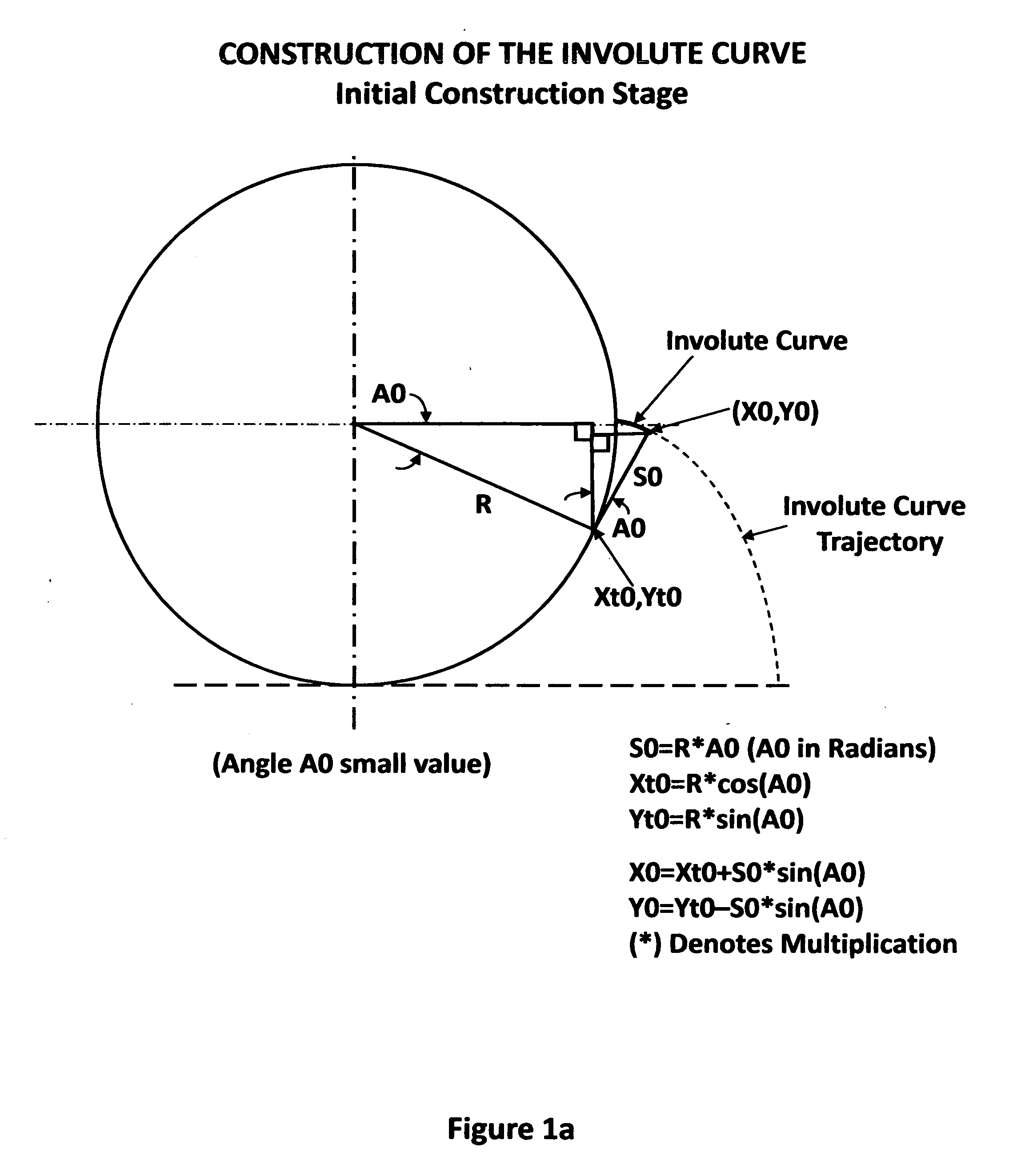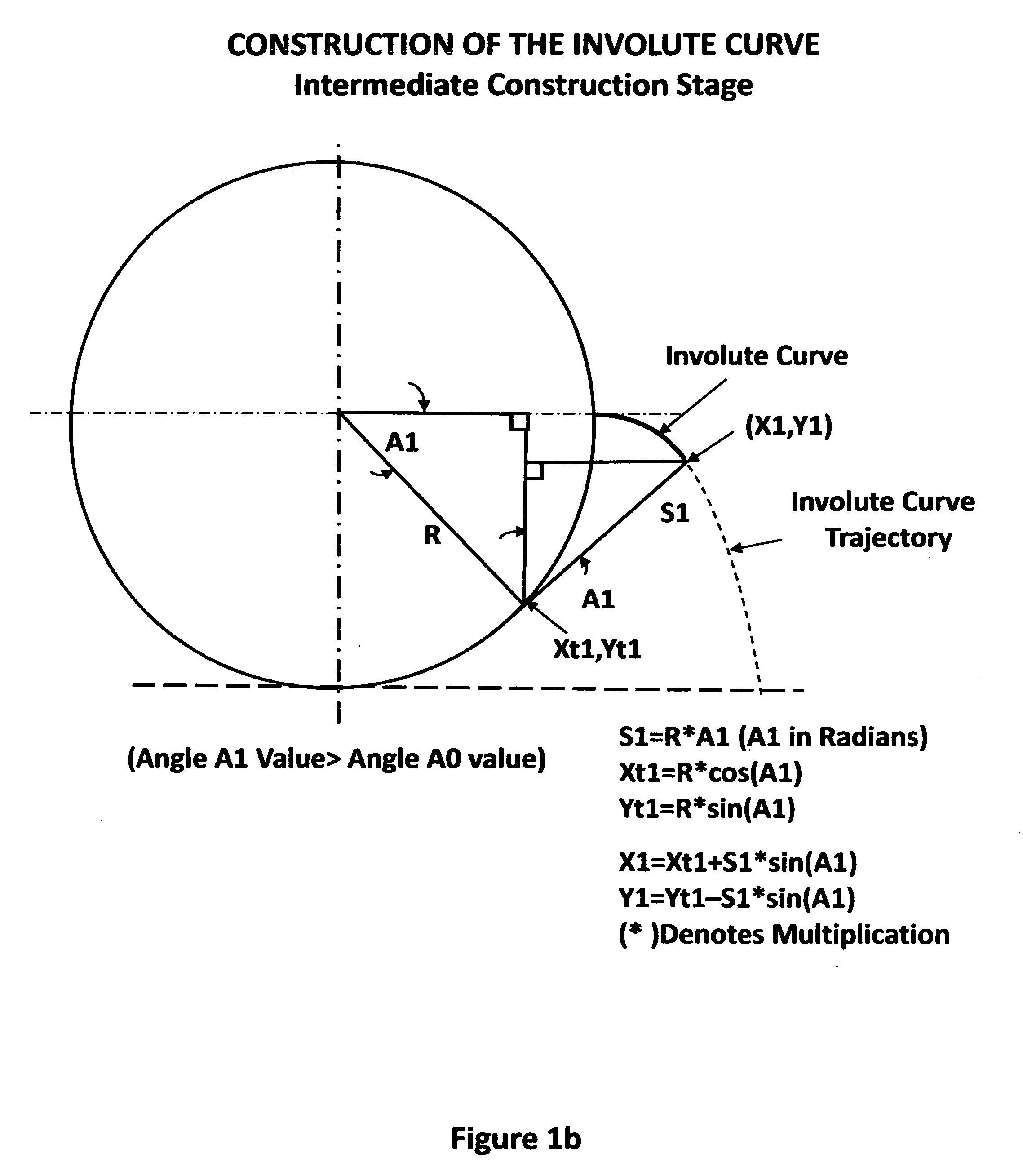Conjugate roller drive
- Summary
- Abstract
- Description
- Claims
- Application Information
AI Technical Summary
Benefits of technology
Problems solved by technology
Method used
Image
Examples
Embodiment Construction
[0028]A worm drive according to one embodiment of the present invention, depicted in FIG. 5 includes a roller wheel 10 and a worm screw 12. The roller wheel 10 includes a body 16 defining a body axis 18. The body is mounted for rotation about body axis 18 by appropriate bearings (not shown) or equivalent means. A plurality of bores 20, are formed in body 16, the bores being disposed in a common plane and extending substantially radially with respect to body axis 18, the bores being spaced at equal intervals about the periphery of the body 16.
[0029]A plurality of rollers 22 are carried on body 16. Each roller tip 26 is in the form of a figure of revolution of an involute curve about a roller axis 24. The rollers 22 are received in bores 20 so that the roller axes 24 extend radially with respect to body axis 18. Directions and locations along each roller axis 24 are specified herein as either “inboard” or “outboard”. As used herein, the term “inboard” means the direction along the rol...
PUM
 Login to View More
Login to View More Abstract
Description
Claims
Application Information
 Login to View More
Login to View More - R&D
- Intellectual Property
- Life Sciences
- Materials
- Tech Scout
- Unparalleled Data Quality
- Higher Quality Content
- 60% Fewer Hallucinations
Browse by: Latest US Patents, China's latest patents, Technical Efficacy Thesaurus, Application Domain, Technology Topic, Popular Technical Reports.
© 2025 PatSnap. All rights reserved.Legal|Privacy policy|Modern Slavery Act Transparency Statement|Sitemap|About US| Contact US: help@patsnap.com



